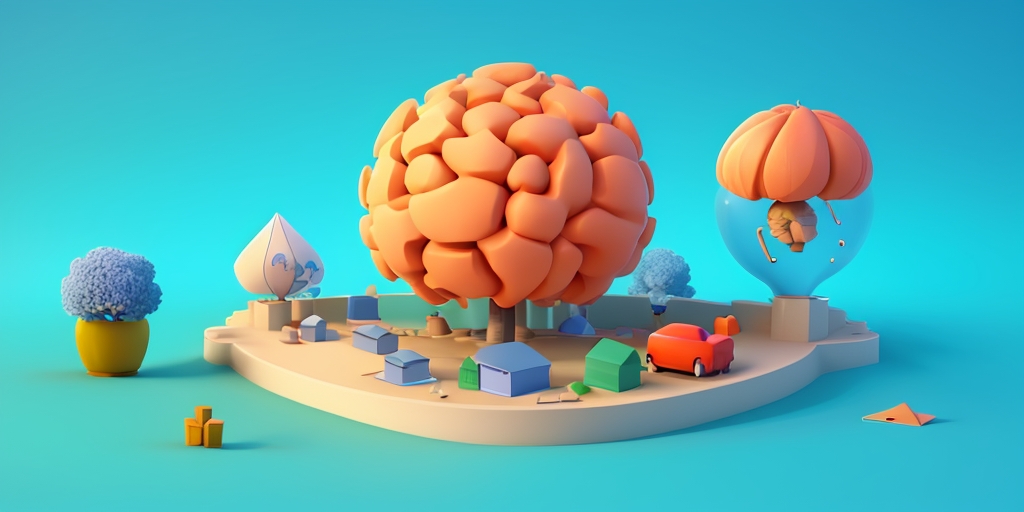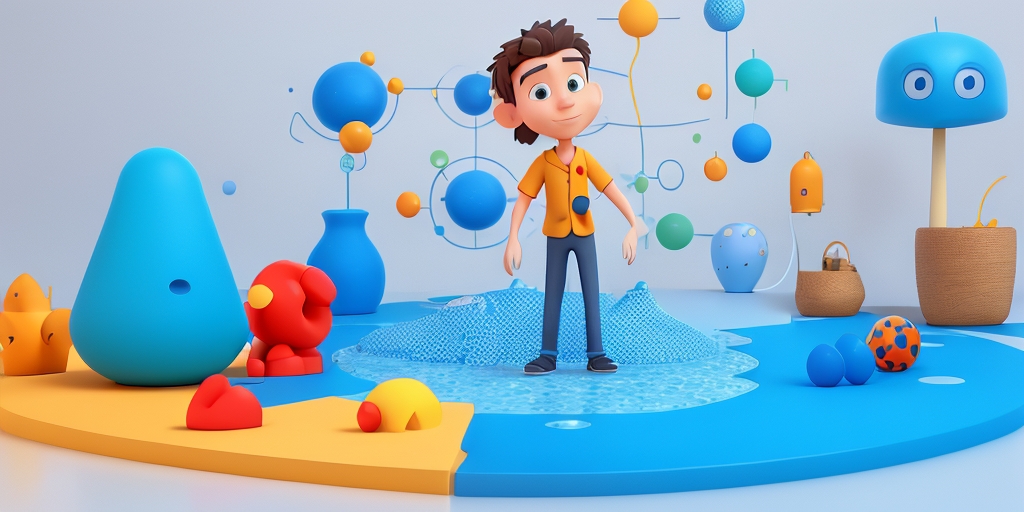Mind Mapping's Impact on Memory and the Creative Mind
I am a creative and analytical person who enjoys problem-solving and finding creative solutions. I am driven by curiosity and a passion for learning, and take initiative to explore and understand new concepts. I am a great communicator and collaborate well with others, and am always looking for opportunities to improve myself and my team.
Mind Mapping's Impact on Memory and the Creative Mind
The struggle with traditional note-taking
Traditional note-taking methods, while familiar, often fall short in several key areas. Here are some of the most common issues:
- Lack of creativity: Linear note-taking doesn't encourage creative thinking. Ideas are written down in a structured, rigid format, which can stifle creativity and limit the generation of new ideas.
- Difficulty in remembering information: Traditional notes are often hard to remember. Without a clear visual representation, our brains struggle to recall the information later.
These problems can make note-taking a frustrating experience, especially when you're trying to learn something new or brainstorm ideas for a project. But what if there was a better way?
The solution: Mind Mapping
Enter mind mapping, a technique that promises to address these issues and improve both your memory and creativity. But how does it work? And why is it more effective than traditional note-taking methods? Stay tuned as we explore the fascinating world of mind mapping in the next section. We'll delve into what mind mapping is, how it works, and the science behind its effectiveness. You won't want to miss it!
Understanding Mind Mapping

Ever wondered what mind mapping is and how it works? Well, you're not alone. Mind mapping is a powerful tool that can revolutionize the way you think, learn, and create. But what exactly is it?
Mind mapping is a visual thinking tool that helps to structure information, helping you to better analyze, comprehend, synthesize, recall and generate new ideas. Just as in every great idea, its power lies in its simplicity.
In a mind map, as opposed to traditional note taking or a linear text, information is structured in a way that resembles much more closely how your brain actually works. Since it is an activity that is both analytical and artistic, it engages your brain in a much richer way, helping in all its cognitive functions. And, best of all, it is fun!
The process of Mind Mapping
Creating a mind map is not rocket science. It starts with a central idea. This could be anything: a concept you're trying to understand, a problem you're trying to solve, a project you're planning, or even a book you're trying to write. The central idea is your foundation.
From there, you branch out. You draw lines from the central idea and write related thoughts and concepts on these lines. These are your main branches. From your main branches, you can create sub-branches, which are related ideas to the ones on your main branches. The process continues as you explore the topic in depth.
Here's a simple step-by-step guide:
- Start in the center with the main idea.
- Develop the related subtopics around this central theme, connecting each of them to the center with a line.
- Repeat the same process for the subtopics, generating lower-level subtopics as you see fit, connecting each of those to the corresponding subtopic line.
Remember, the structure of a mind map is not rigid. It is a dynamic tool that adapts to your needs and style.
The science behind Mind Mapping
So, why does mind mapping work so well? The answer lies in how our brains function. According to a study published in the journal Frontiers in Psychology, mind mapping taps into both the left and right hemispheres of our brain, engaging our logical and creative sides simultaneously.
Traditional note-taking, on the other hand, tends to be linear and largely non-visual. This can limit our thinking and make it harder to make connections between related ideas. Mind mapping, with its visual nature and organic, flowing structure, encourages a more holistic thinking process.
As Tony Buzan, the inventor of mind mapping, once said, "The mind map encourages creativity and flexibility, and you need both in today's world."
Now that you understand what mind mapping is and how it works, you might be wondering: how can it boost creativity? Stay tuned, because that's exactly what we're going to explore next.
How Mind Mapping Boosts Creativity

Ever wondered how some people seem to have an endless well of creativity? The secret might be simpler than you think. It's all about how they organize their thoughts. Let's dive into how mind mapping can be a game-changer for your creative thinking.
Visualizing Ideas
Imagine you're trying to come up with a new concept for a project. You have a bunch of ideas floating around in your head, but they're all jumbled up. It's hard to see how they connect or if they even make sense together. This is where mind mapping comes in.
Mind mapping allows you to visualize your thoughts in a structured way. You start with a central idea and then branch out into related concepts. This visual representation can lead to more creative associations and insights. It's like looking at a city from above - you can see how everything is connected and spot new paths you hadn't noticed before.
A study by the University of British Columbia found that visualizing information can help people generate more creative ideas. So, the next time you're stuck in a creative rut, try drawing a mind map. You might be surprised by the connections you discover.
Encouraging Brainstorming
Brainstorming is a crucial part of the creative process. It's when you let your mind run wild and come up with as many ideas as possible. But sometimes, it can feel like you're going in circles, rehashing the same old concepts. This is where mind mapping can give your brainstorming sessions a much-needed boost.
When you create a mind map, you're not just jotting down ideas. You're actively exploring the relationships between these ideas. This encourages you to think outside the box and generate new concepts. As Thomas Edison once said, "To invent, you need a good imagination and a pile of junk." Mind mapping helps you sift through that pile of junk and find the gems hidden within.
So, how can you use mind mapping to enhance your memory? Stay tuned to find out. You might be surprised by how much of a difference it can make.
Mind Mapping and Memory Enhancement

Ever found yourself struggling to remember a complex idea or concept? You're not alone. Many of us have been there, trying to cram information into our brains, only to forget it moments later. But what if there was a way to make remembering easier? Enter mind mapping, a tool that can significantly improve your memory recall. Let's explore how.
Making Connections
One of the key benefits of mind mapping is its ability to help us make connections between related ideas. When we create a mind map, we start with a central idea and then branch out with related thoughts and concepts. This process of linking ideas together can significantly improve our memory recall.
Think about it this way: when you're trying to remember something, your brain doesn't work in a linear fashion. Instead, it jumps from one related idea to another. Mind mapping mimics this natural process, making it easier for us to remember information.
For instance, let's say you're trying to remember the key points of a book you've just read. Instead of writing a linear summary, you could create a mind map. Start with the book's title in the center, then branch out with the main themes, characters, and plot points. By visually linking these ideas together, you'll find it much easier to recall the book's content later on.
Simplifying Complex Ideas
Another advantage of mind mapping is its ability to simplify complex ideas. By breaking down a complex concept into smaller, related parts, a mind map can make it easier to understand and remember.
Let's take the example of learning a new language. Instead of trying to memorize a list of vocabulary words, you could create a mind map. Start with a central word, then branch out with related words and phrases. This visual representation can help you understand the connections between words, making it easier to remember them.
As Albert Einstein once said, "If you can't explain it simply, you don't understand it well enough." Mind mapping is a powerful tool that can help us simplify and understand complex ideas, leading to improved memory recall.
Now that we've explored how mind mapping can enhance your memory, you might be wondering: how can I start creating my own mind maps? And what tools can I use to make the process easier? Stay tuned, as we'll be diving into these topics in the next section.
Putting Mind Mapping into Practice

Now that we've explored the theory and benefits of mind mapping, it's time to put this knowledge into practice. Here are some practical tips to help you get started and make mind mapping a regular part of your life.
Starting Your First Mind Map
Starting your first mind map can seem daunting, but it doesn't have to be. Begin with a central idea or topic. This could be anything from a project you're working on, a problem you're trying to solve, or a concept you're trying to understand. Write this idea in the center of your page.
Next, start brainstorming related ideas, thoughts, or subtopics. Draw lines from your central idea to these related thoughts, creating branches. Each branch can then have its own sub-branches, creating a web of interconnected ideas. Remember, there's no right or wrong way to do this. The goal is to create a visual representation of your thoughts that makes sense to you.
Making Mind Mapping a Habit
Like any new skill, mind mapping becomes easier and more effective with practice. Try incorporating it into your daily routine. Use it to plan your day, brainstorm ideas for a project, or even to take notes during a meeting or lecture. The more you use it, the more natural it will become.
Studies have shown that regular use of mind mapping can lead to improved memory and creativity. A study published in the journal Thinking Skills and Creativity found that students who used mind mapping regularly performed better on creative thinking tasks than those who did not.
Conclusion: Unlock Your Brain's Potential with Mind Mapping
In conclusion, mind mapping is a powerful tool for boosting memory and creativity. It allows you to visualize your thoughts, make connections between ideas, and simplify complex concepts. By incorporating mind mapping into your daily life, you can unlock your brain's full potential and enhance your ability to think creatively and remember information.
So why not give it a try? Start your first mind map today and see the difference it can make. Remember, the only limit is your imagination.



.jpg)
.jpg)

.jpg)
.jpg_nowm_1260.jpg)